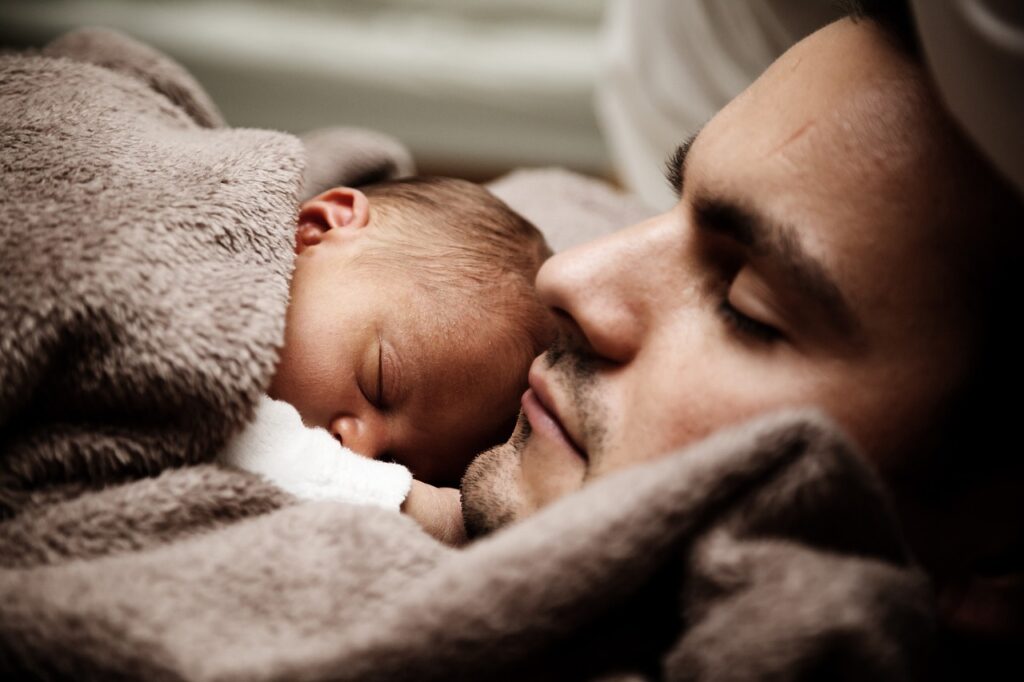All About Plagiocephaly From How To Identify It & What To Do
Introduction
Plagiocephaly (also known as flat head syndrome) is a condition in which the shape of an infant’s head is flattened or asymmetrical due to pressure on the baby’s skull. It typically occurs shortly after birth when a baby spends extended periods of time in one position, such as sleeping on their back. This can result in the flattening of the back or sides of a baby’s head. Plagiocephaly is a common condition, affecting up to one in every five babies born.
Understanding plagiocephaly is important for parents of infants as this condition can have both aesthetic and physical implications. Not only can it be a source of distress for parents due to its visible effects on the baby’s appearance but there are also potential long-term health issues associated with the condition. Plagiocephaly may lead to an increase in the size of the affected area and asymmetry of the face, skull, and ears. If left untreated, plagiocephaly may cause facial deformities or physical difficulties that require medical treatment.
Definition and Types of Plagiocephaly
Plagiocephaly Defined
Plagiocephaly is a condition in which the shape of an infant’s head is flattened or asymmetrical due to pressure on the baby’s skull. It typically occurs shortly after birth when a baby spends extended periods of time in one position, such as sleeping on their back. This can result in flattening of the back or sides of a baby’s head. Plagiocephaly is also known as flat head syndrome and affects up to one in every five babies born.
Different types of plagiocephaly.
There are two types of plagiocephaly: positional and deformational.
Positional plagiocephaly is the most common type of flat head syndrome and is caused by external pressure on the baby’s skull from lying in one position for too long. Parents can reduce the likelihood of positional plagiocephaly by regularly alternating their baby’s head position while they are sleeping and when they are awake.
Deformational plagiocephaly is caused by an underlying skull abnormality or physical difficulty, such as torticollis (a condition in which the neck muscles become too tight). This makes it difficult for the baby to move their head freely and thus increases the risk of flat head syndrome. Deformational plagiocephaly is usually more severe than positional plagiocephaly and requires medical treatment to correct the underlying physical condition.
Differences between plagiocephaly and other similar conditions.
It is important to be aware that plagiocephaly is not the same as craniosynostosis, which occurs when the sutures on a baby’s skull close too early. Craniosynostosis requires immediate medical attention, while plagiocephaly can usually be corrected without surgery.
In addition, plagiocephaly is not the same as brachycephaly, which also results in a flat head but is caused by premature fusion of the sutures and bones in the skull. While both plagiocephaly and brachycephaly can cause facial asymmetry, only brachycephaly requires medical treatment.
Finally, it’s important to note that plagiocephaly is not the same as positional preference, which occurs when a baby has a tendency to sleep or be held in one position more often than others. This can be corrected with repositioning but does not usually result in drastic changes to the skull shape and size.
Causes of Plagiocephaly
Common factors that increase the risk of plagiocephaly.
Plagiocephaly is often caused by a combination of the following factors:
- Prematurity or low birth weight – Babies born prematurely or with a low birth weight are at an increased risk of developing flat head syndrome because their skulls have not yet fully developed.
- Positional preference – As mentioned, this occurs when a baby has a tendency to be in the same position for extended periods of time, such as when sleeping or being held.
- Tight neck muscles – Neck and head control develops slowly during infancy, and tight neck muscles can limit an infant’s ability to move their head from side to side.
- Limited tummy time – Babies need to spend some time lying on their tummies in order to develop strong neck muscles and head control. If babies don’t get enough “tummy time”, they may be at an increased risk of developing the flat head syndrome.
Risk factors.
Plagiocephaly is more likely to occur in babies who have had multiple births, such as twins or triplets. This is due to the limited space available in the womb, which can cause babies’ skulls to press against each other. It is also more common in babies born via cesarean section or with a high birth weight, as these babies are not exposed to the normal squeezing in a vaginal delivery.
Symptoms and Diagnosis
Symptoms of plagiocephaly
Parents may notice the following signs of plagiocephaly:
1. A flat spot on your baby’s head, usually on one side
2. A misshapen head, with the forehead and/or back of the head appearing to be more prominent or asymmetrical
3. Unevenly developed ears, eyes, and cheekbones
4. An asymmetrical facial appearance
5. Tight neck muscles or difficulty moving the baby’s head from side to side.
How plagiocephaly is diagnosed
If parents suspect that their baby may have plagiocephaly, they should take them to see a doctor. The doctor will perform a physical examination and may measure the head to confirm the diagnosis. They may also refer the infant to an orthopedic specialist for further evaluation.
Early diagnosis and intervention.
It is important to diagnose and treat plagiocephaly as early as possible in order to ensure that the baby’s head shape develops properly. If left untreated, plagiocephaly can cause facial asymmetry, delayed motor development, speech delays, and vision problems. Early diagnosis allows for prompt intervention which can help prevent these complications from occurring.
Treatment Options
When it comes to treating plagiocephaly, there are two main options: repositioning therapy and cranial helmets. Repositioning therapy involves positioning the baby differently every day while they sleep in order to encourage the head to reshape itself over time.
Cranial helmets are also an option for treating plagiocephaly. These helmets are custom-made to fit the baby’s head and apply gentle pressure to areas that need reshaping. The helmet is worn throughout the day, except when the baby is bathing or sleeping, and should only be removed when supervised by a healthcare provider.
Role of physical therapy in managing plagiocephaly.
Physical therapy can also play an important role in the management of plagiocephaly. Physical therapists are specially trained to assess a baby’s movement patterns and muscle development, and they can design activities that help encourage the head to develop evenly. These activities may involve supervised tummy time or using toys to encourage movement in different directions.
Furthermore, research suggests that PT may be as effective as a helmet. This goes in line with research supporting that PT is similar to the use of a pillow. Use of a pillow is not recommended however due to increased SIDS risk. This leaves physical therapy as an intervention of choice for plagiocephaly.
When surgery might be necessary.
In some cases, surgery might be necessary to correct plagiocephaly. This is usually only recommended when the head shape has not improved with repositioning therapy or cranial helmets and the baby’s vision or motor development is affected by the condition. Surgery involves making an incision in the skull and reshaping it so that it grows more evenly.

Prevention of Plagiocephaly
Tips and strategies to prevent plagiocephaly.
Fortunately, there are a number of steps that parents can take to prevent plagiocephaly. Some examples of which include:
- Tummy time: This encourages the baby to use different muscles in their head and neck, which can help prevent flat spots. It is recommended that babies get tummy time for at least 30 minutes per day to help promote even head growth.
- Alternating positions: When placing a baby down to sleep or rest, parents should alternate which side of the head is placed on the flat surface each time. This helps encourage even head growth.
- Varying stimulation: Parents can also vary which toys their baby plays with and introduce different activities to encourage neck movement in different directions.
- Supervised repositioning: Parents should not try to reposition a baby’s head themselves, as this can lead to further flat spots. Instead, they should speak to a specialist who can help them safely reposition the baby’s head.
Importance of regular check-ups and monitoring.
Regular check-ups are an important part of preventing plagiocephaly. Parents should take their baby to their doctor or chiropractor for regular check-ups so that any signs of plagiocephaly can be identified early and treated as necessary. It is also important to monitor the baby’s head shape at home, checking for any flattening or asymmetry that may be developing.
Impact on Child Development
How plagiocephaly affects brain development.
Plagiocephaly itself does not affect the development of the brain. However, if it is severe or left untreated for a long period of time, it can lead to delays in physical and cognitive development. This is because plagiocephaly can cause difficulty in motor skills, such as rolling over and sitting up, and can also restrict movement in the neck, making it difficult for a baby to look around and explore its environment.
Signs of developmental delay due to plagiocephaly
If parents observe any signs of developmental delay in their child, they should speak to their doctor or specialist as soon as possible. Signs that could indicate potential problems include the following:
- Delayed achievement of motor milestones, such as rolling over or sitting up
- Difficulty with fine motor skills, such as using a spoon or picking up objects
- Restricted range of motion in the neck
- Delayed language development
- Delayed cognitive skills, such as problem-solving and learning new tasks.
Potential long-term effects.
Generally, plagiocephaly does not cause any long-term effects. However, if it is left untreated for a long period of time or is severe, it can lead to delayed physical and/or cognitive development. In addition, some studies have suggested that there may be an association between persistent plagiocephaly and behavioral problems such as ADHD in later childhood.
The long-term effects of plagiocephaly can vary, and while some studies suggest that untreated plagiocephaly can lead to physical and functional challenges, it’s important to note that more research is needed to fully understand these potential outcomes.
- Physical Effects: If left untreated, severe plagiocephaly can result in permanent changes to an individual’s head shape and facial features. This may include misalignment of the ears or a bulging forehead.
- Functional and Developmental Outcomes: Some studies suggest that infants with untreated plagiocephaly may be at a higher risk for developmental difficulties. These can manifest as subtle problems of cerebral function, including motor skills delays, language delays, and learning difficulties. However, it’s important to note that these findings are not definitive, and many children with plagiocephaly develop normally.
- Psychosocial Impact: There can be a psycho social impact associated with the physical appearance resulting from plagiocephaly. Children may face challenges related to self-esteem and social interaction, especially if they’re teased about their appearance.
- Other Potential Consequences: Research has suggested links between plagiocephaly and conditions like torticollis (a condition involving a tilted head or trouble turning the neck), and sleep apnea. More research is needed to confirm these potential links.

Parental Role in Management and Treatment
Importance of parent education and involvement.
It is important for parents to be aware of the signs and potential long-term effects of plagiocephaly so that they can take appropriate action if necessary. Parents should also be encouraged to actively participate in their child’s treatment, as parental involvement has been shown to have positive impacts on outcomes.
Suggestions for ways parents can support their child’s treatment at home.
There are many ways parents can support their children. Home treatment for plagiocephaly includes:
- Encouraging tummy time when awake. This helps the baby to develop stronger neck and back muscles, which can help to reduce pressure on the flattened area of the head.
- Repositioning the baby’s head when they are sleeping. Doing this will reduce pressure on any particular area of the head during sleep.
- Using seating devices such as bouncy chairs and car seats to help with positioning. This will help to encourage the baby to face away from the flattened area of the head when they are seated.
- Providing a variety of stimulating toys and activities for your child that require them to move their head in different directions.
Evidence-Based Treatment Approaches
Treatment approaches for infants with mild plagiocephaly
For infants with mild plagiocephaly, the first step in treatment is usually conservative management and parent education. This typically includes advice on positioning and activities such as tummy time to help encourage symmetrical head shape growth. If this does not improve the condition after a few months, other treatments may be recommended.
Treatment approaches for infants with moderate to severe plagiocephaly
If an infant’s plagiocephaly is more severe or does not improve after conservative management, the American Association of Pediatrics (AAP) recommends a referral to a pediatric specialist such as a physical therapist. This specialist can assess the child and provide guidance on specific treatment approaches.
Physical therapy is often recommended for infants with plagiocephaly. It can help to improve range of motion, posture, and muscle tone in the affected area. Specific techniques may be used to encourage symmetrical head growth such as stretches, repositioning exercises, and cranial molding helmets (also called cranial orthoses).
Cranial molding helmets are custom-fitted plastic shells that help to modify the shape of the head by providing a gentle, constant pressure on the flattened area. The helmet is worn for several months while your child is awake and asleep. It helps to guide symmetrical head growth as well as reduce facial asymmetry.
Benefits of early diagnosis and treatment.
Early diagnosis and intervention can reduce the severity of plagiocephaly and help to prevent long-term effects. It is important for parents to be aware of the signs and potential complications associated with plagiocephaly so that they can seek medical attention if needed. If left untreated, plagiocephaly can lead to difficulties with vision, speech, and motor development.
Early diagnosis also allows parents to discuss treatment options with their doctor and start intervention as soon as possible. Treatment may include physical therapy, cranial orthoses (a helmet) or a combination of both. Cranial orthoses have been found to be an effective means of correcting head shape in infants and can help reduce the severity of plagiocephaly over time.
When combined with physical therapy, cranial orthoses have been found to be particularly effective in reducing the severity of plagiocephaly. Physical therapy can help strengthen the neck muscles and improve posture, as well as encourage babies to adopt different head positions and increase their ability to move their heads freely.
When deciding on a treatment plan, parents should discuss the potential risks and benefits with their doctor. It is important to remember that plagiocephaly can resolve slowly over time without any intervention, but early diagnosis and treatment may be necessary to prevent further complications down the road.

Conclusion
Plagiocephaly is a common condition that affects up to one in five infants. It is important for parents to be aware of the signs and potential complications associated with plagiocephaly so that they can seek medical attention if needed. Early diagnosis and treatment can help reduce the severity of the condition and prevent long-term effects.
When deciding on a treatment plan, parents should discuss the risks and benefits with their doctor. Cranial orthoses have been found to be an effective means of correcting head shape in infants and may help reduce the severity of plagiocephaly when combined with physical therapy. With early treatment, babies can go on to enjoy healthy development and reach all their developmental milestones.

